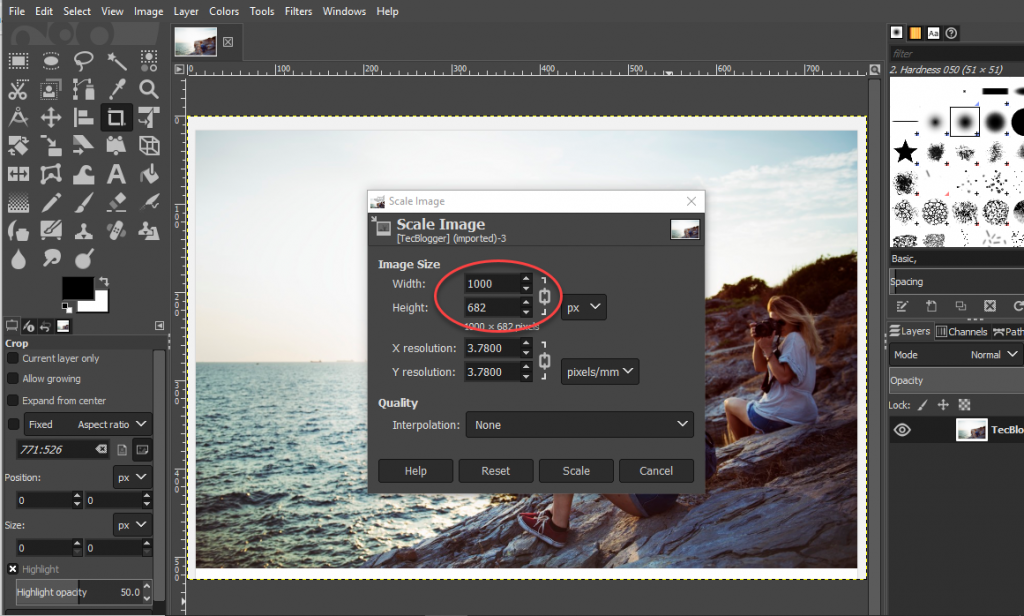• Click on the Crop symbol on the tool stash (on the left half of Photoshop’s default workspace).
• Draw another editing region or drag the edges of the yield box to the ideal positions.
• Press Enter (Windows) or Return (Mac OS) to trim the image.
You can likewise utilize the Crop menu to keep your image’s angle proportions relative, yet just in case you’re printing your old photograph.
In the event that the scan of your image is somewhat screwy, you can fix it utilizing the yield instrument.
The Most Effective Method To Fix A Slanted Image:
• Click on the Crop symbol, then, at that point click the Straighten symbol on the toolbar.
• Drag a line along with a level or vertical component in the photograph.
• Let go of the mouse with the goal that Photoshop can pivot your image and harvest its lopsided edges.
• Once you are fulfilled, press Enter. Photoshop will likewise eliminate the overabundance image on the off chance that you’ve empowered the Delete Cropped Pixels checkbox.
The Most Effective Method To Pivot Your Image:
Photoshop CC allows you to turn your image through its image Rotation setting or the Transform work in the Edit menu.
To Turn Your Image Utilizing The Image Rotation Alternative:
• Click on the image in the taskbar.
• Select image Rotation.
• Choose your favored revolution.
To Turn Your Image Utilizing The Edit Menu:
• Click on your image to choose it.
• Click on the Edit menu, then, at that point pick Transform.
• Choose your favored revolution.
4. Audit Your Photograph For Any Amendments You Need To Make
Evaluating the image you’re working on will assist you with choosing the changes or amendments that you need to make. Your ideal changes will rely upon your photograph’s present condition.
5. Make The Important Changes In Accordance With Your Image
There are two different ways to do this step in Photoshop: changing your image’s tone and fixing its harmed spots.
Make Shading Rectification Changes.
Old photographs are generally blurred, yet on the off chance that you need to improve the tone, shading, differentiation, and by and large dynamic quality of the photograph, Photoshop can do these, as well.
In the event that you select an image from the taskbar, you’ll see a drop-down menu that will basically give you all you require for some essential shading rectification. Under Adjustments, you’ll see three choices: Auto Tone, Auto Contrast, and Auto Color. Attempt these out first and check whether these programmed rectifications convey your ideal impact. If not, you can do these amendments physically.
It’s a smart thought to figure out how to peruse the histogram so you can make profoundly precise changes. From that point, select Adjustments and utilize the various capacities under this menu alternative. There are essential changes like Brightness, Contrast, exposure, and Vibrance, or the marginally more top to bottom change instruments like Curves and Levels.
Contingent upon the state of your photograph, the best thing to do is to mess with these diverse change instruments to get the right tone, shading, and differentiation.
On the off chance that your image has a shading projected, here are a couple of steps to follow to address the impact:
• Highlight your copy layer, then, at that point click on the change layers symbol under the Layers board.
• Choose Levels from the change layer choices.
• To change your photograph’s RGB (red, green, and blue) levels, click on the committed tab. An RGB menu will show up.
• Click on any of the shading choices, then, at that point carry the white and dark sliders to the histogram’s vertical line.
• Once you’re finished changing the RGB levels, click on the Layers board to exit.
• Highlight your copy layer and your change layer, then, at that point right snap on the space and select Merge Layers to consolidate the two layers.
Fix The Harmed Spots.
This part is the place where it gets somewhat precarious—you’ll need an eye for detail and a ton of tolerance! On the off chance that there are any scratches, stains, and other undesirable imprints on your photograph, you can utilize a couple of fledglings’ well-disposed spot remedy Photoshop apparatuses: the Spot Healing Brush, the Patch Tool, and the Clone Stamp.
• Click on the Spot Healing Brush symbol (the one that appears as though a bandage) on the tool stash.
• Choose your ideal brush size in the choices bar.
• Choose between the Proximity Match, Create Texture, or Content-Aware Type choices. Any of these alternatives should work for what you’re attempting to accomplish.
• Select or deselect the Sample All Layers alternative in the event that you need to test information from all layers or one dynamic layer.
• Click on the spot you need to fix, or snap and drag the brush over blemishes in a larger region.
